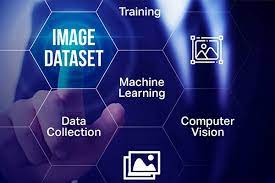
Photo by TheDigitalArtist on Pixabay
BEST WAYS TO FIND IMAGE DATASET
» Contents:
Introduction to Image Datasets
Importance of Collecting High-Quality Image Datasets
Methods for Collecting and Find Image Datasets
Sources for Obtaining Image Datasets
Tools and Software for Managing and find Image Datasets
Ethical Considerations in Collecting Image Datasets
Challenges in Collecting Image Datasets
Best Practices for Organizing and Labeling Image Datasets
Applications of Image Datasets in Machine Learning.
Conclusion
Introduction to Image Datasets
As a researcher or a data scientist, accessing high-quality image datasets is crucial in various fields such as computer vision, machine learning, and artificial intelligence. Image datasets are collections of images that are used for training, testing, and validating algorithms and models. These datasets are essential for developing and improving image recognition, object detection, and image classification systems. In this article, I will explore the methods, sources, tools, ethical considerations, challenges, and best practices for obtaining and managing image data.
Importance of Collecting High-Quality Image Datasets
The quality of the image data directly impacts the performance and accuracy of the machine learning models and algorithms trained on it. High-quality image data are diverse, well-labeled, and representative of the real-world scenarios they aim to address. They enable the development of robust and reliable models that can generalize well to new, unseen data. In contrast, low-quality or biased image data can lead to inaccurate and discriminatory results, affecting the fairness and reliability of the deployed systems. Therefore, it is essential to prioritize the collection and use of high-quality image dataset to ensure the effectiveness and fairness of the developed models.
Collecting high-quality image data also contributes to the advancement of various applications, including medical imaging, autonomous vehicles, surveillance systems, and augmented reality. These applications rely on accurate and comprehensive image datasets to enhance their capabilities and performance. Furthermore, high-quality image datasets facilitate research in areas such as environmental monitoring, agricultural analysis, and cultural heritage preservation. By recognizing the importance of high-quality image datasets, we can drive innovation and progress in diverse fields and contribute to the development of impactful and beneficial technologies.
In the next section, I will explore the methods for collecting image datasets, including data collection strategies and techniques.
Methods for Collecting and Find Image Datasets
There are several methods for collecting and find image data, each with its advantages and challenges. One common approach is to capture images using digital cameras, smartphones, or specialized imaging devices. This method allows researchers to obtain custom datasets tailored to specific research or application requirements. Additionally, web scraping and crawling techniques can be employed to extract images from online sources such as e-commerce websites, social media platforms, and public repositories. This method enables the collection of large-scale image data for diverse use cases.
Another method involves leveraging existing image databases and repositories, which offer pre-curated and annotated datasets for research and development purposes. These repositories often provide access to publicly available image data, reducing the effort and resources required for dataset creation. Furthermore, crowdsourcing platforms can be utilized to engage human annotators and contributors in the collection and labeling of image data, ensuring diverse perspectives and expertise in dataset creation.
In the subsequent section, I will discuss the sources for obtaining and find image dataset, including open datasets, commercial sources, and collaborative initiatives.
Sources for Obtaining Image Datasets
When seeking image datasets, researchers and practitioners can explore various sources to meet their specific requirements. Open datasets, available through public repositories and data-sharing platforms, offer a wide range of image data across different domains and applications. Platforms such as Kaggle, ImageNet, and Open Images provide access to diverse and well-documented image datasets for research and educational purposes. These open datasets foster transparency, collaboration, and reproducibility in the development and evaluation of image-related algorithms and models.
Commercial sources and vendors also offer curated image datasets, often tailored to specific industry needs and use cases. These datasets may include specialized imagery, proprietary content, and domain-specific annotations, catering to the requirements of commercial applications and enterprise solutions. Additionally, collaborative initiatives and research consortia contribute to the creation and dissemination of image datasets, fostering community-driven efforts to address common challenges and research goals.
In the following section, I will explore the tools and software available for managing image data, including data annotation platforms, version control systems, and data augmentation tools.
Tools and Software for Managing and find Image Datasets
Effective management of image datasets requires the use of specialized tools and software to organize, annotate, and preprocess the collected images. Data annotation platforms, such as Labelbox, CVAT, and V7, enable the efficient labeling and annotation of image data, supporting tasks such as object detection, segmentation, and classification. These platforms provide collaborative interfaces for annotators and researchers to create detailed and accurate annotations, essential for training machine learning models.
Version control systems, such as Git and DVC, offer capabilities for tracking changes, managing revisions, and collaborating on image data and associated metadata. These systems ensure the reproducibility and traceability of dataset modifications, facilitating collaborative research and experimentation. Furthermore, data augmentation tools, including Albumentations and imgaug, allow for the generation of augmented images from existing datasets, enhancing the diversity and robustness of training data for machine learning tasks.
In the subsequent section, I will address the ethical considerations in collecting image datasets, emphasizing the importance of privacy, consent, and fairness in dataset creation and usage.
Ethical Considerations in Collecting Image Datasets
The collection and utilization of image datasets raise important ethical considerations related to privacy, consent, and fairness. When gathering images from public sources or engaging with human subjects, it is essential to respect privacy rights and ensure compliance with data protection regulations. Obtaining informed consent and transparently communicating the purpose of dataset collection are fundamental principles in ethical data acquisition, particularly when dealing with sensitive or personal imagery.
Moreover, ensuring the fairness and inclusivity of image datasets is crucial for mitigating bias and discrimination in machine learning applications. This involves addressing representation gaps, avoiding stereotypes, and considering the cultural and social implications of the collected images. By promoting diversity and inclusivity in image dataset creation, researchers and practitioners can contribute to the development of equitable and unbiased machine learning systems.
In the following section, I will discuss the challenges associated with collecting image datasets, including data quality, annotation complexity, and domain-specific requirements.
Challenges in Collecting Image Datasets
The process of collecting image datasets is accompanied by various challenges that impact the quality, diversity, and usability of the acquired data. One significant challenge is ensuring the accuracy and consistency of image annotations, especially in complex and multi-class datasets. Human annotation errors, inter-annotator variability, and ambiguous labeling criteria can introduce noise and uncertainty into the dataset, affecting the training and evaluation of machine learning models.
Furthermore, managing large-scale image datasets requires addressing storage, retrieval, and computational limitations, particularly when working with high-resolution images or video data. The volume and complexity of image datasets can strain storage resources and computational infrastructure, necessitating efficient storage solutions and data processing pipelines. Additionally, domain-specific requirements and constraints, such as medical imaging regulations or industrial safety standards, pose unique challenges in collecting and utilizing image datasets for specialized applications.
In the subsequent section, I will outline the best practices for organizing and labeling image datasets, emphasizing the importance of consistency, documentation, and validation.
Best Practices for Organizing and Labeling Image Datasets
Adhering to best practices for organizing and labeling image datasets is essential for ensuring the quality, consistency, and usability of the collected data. Establishing clear and standardized naming conventions, directory structures, and metadata documentation facilitates the efficient organization and retrieval of images within the dataset. Consistent file naming and folder hierarchy enable researchers and practitioners to navigate and manage image datasets effectively, reducing the risk of data loss or misplacement.
Moreover, implementing rigorous quality control processes and validation checks for image annotations and labels enhances the reliability and accuracy of the dataset. Cross-validation techniques, inter-annotator agreement assessments, and automated validation pipelines contribute to identifying and addressing labeling inconsistencies and errors. Additionally, documenting the dataset creation process, annotation guidelines, and dataset statistics promotes transparency and reproducibility in dataset utilization and model development.
In the following section, I will explore the applications of image datasets in machine learning, highlighting their role in training, validation, and deployment of image-based models.
Applications of Image Datasets in Machine Learning
Image datasets serve as fundamental resources for training, validating, and fine-tuning machine learning models and algorithms in diverse applications. In the field of computer vision, image datasets enable the development of image recognition systems, object detection models, and image segmentation algorithms. These models contribute to advancements in autonomous navigation, visual understanding, and scene understanding, powering technologies such as self-driving cars, robotics, and smart surveillance systems.
Furthermore, image datasets play a vital role in medical imaging research and healthcare applications, supporting the diagnosis, analysis, and treatment of various medical conditions. The availability of annotated medical image datasets facilitates the development of diagnostic tools, disease classification models, and medical image analysis solutions. Moreover, image datasets find applications in content-based image retrieval, visual search engines, and recommendation systems, enhancing the user experience and relevance of visual content platforms.
In the final section, I will summarize the key insights and takeaways from the article, emphasizing the significance of high-quality image datasets and their impact on machine learning and AI advancements.
Conclusion
In conclusion, the accessibility and utilization of high-quality image datasets are essential for driving advancements in machine learning, computer vision, and artificial intelligence. The methods for collecting and find image datasets, ranging from data capture and web scraping to leveraging existing repositories and crowdsourcing, offer diverse approaches to dataset creation and acquisition. Managing image datasets with specialized tools, ethical considerations, and best practices ensures the reliability, fairness, and effectiveness of the developed machine learning models.
Furthermore, the applications of image datasets in various domains, including healthcare, autonomous systems, and visual content platforms, demonstrate their significance in enabling innovation and progress. By addressing the challenges and ethical considerations in collecting image datasets and embracing best practices, researchers and practitioners can contribute to the development of robust and inclusive machine learning solutions. Ultimately, the continuous advancement and responsible use of image datasets are pivotal in shaping the future of AI and machine learning technologies.
If you are interested in learning more about image datasets and their applications, feel free to explore our comprehensive guides and resources on dataset collection, annotation tools, and machine learning best practices. Your journey in leveraging image datasets for impactful AI solutions starts here.
For more information visit:
Importance and best uses of image recognition in 2023

